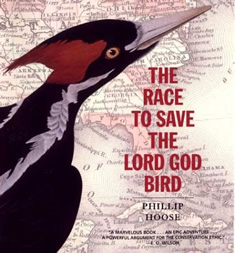 This Q&A was excerpted from Jeannette Larson’s interview with author Phillip Hoose for BookLinks. Within the interview, Phil answers the frequently asked question of who his audience is, adult or young adult.
This Q&A was excerpted from Jeannette Larson’s interview with author Phillip Hoose for BookLinks. Within the interview, Phil answers the frequently asked question of who his audience is, adult or young adult.
BookLinks: Most of your books are published for young people, but the information is so extensive that they’re also perfect for most adults. What makes your books, like Moonbird, for example, a book for children?
Phillip Hoose: Well, I don’t write for children. I write for myself; I write for my inner Phil, and that person has no age. I try to write good books for good readers using language accessible to adults and younger readers. I strive to provide a clear, compelling, suspenseful, and moving account of the subject. Any person of any age who wants to learn about the extinction of a species and the rise of environmental groups should be able to enjoy The Race to Save the Lord God Bird because all the research I did gave me a suspenseful story with strong characters.
I sort of moved into the young adult marketplace after I had made a name with We Were There, Too!, which was nominated for the National Book Award. That is something that doesn’t happen for many nonfiction books, and it got me a niche in the youth market. There are advantages to publishing books for the youth market—schools and libraries are main distribution points, and the American Library Association puts a bright spotlight on children’s books. But I present my books to a lot of adult audiences, too. Very few adults I meet seem to think the books are not for them.

I don’t like how young adult literature is viewed as inferior to adult books. It’s the main place in media where we have representation. Even in movie adaptations of YA novels, young characters are played by actors in their twenties. I think it’s important to recognize the contributions real young people have made to history. Even if we weren’t the ones running for office and leading expeditions, we WERE there too.
Thank you so much for your books.